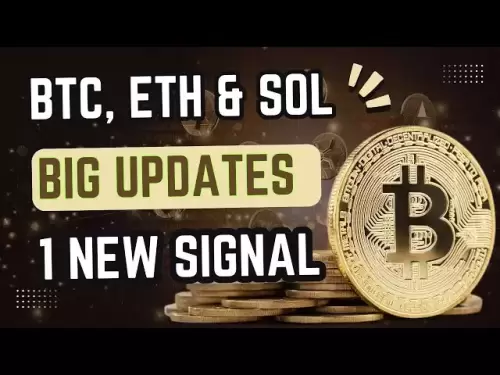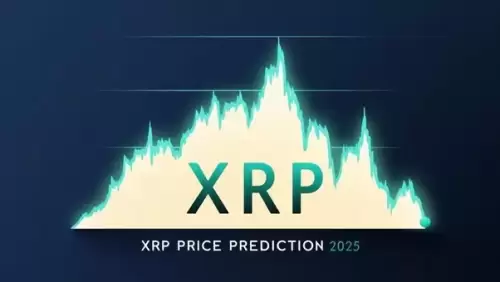 |
|
 |
|
 |
|
 |
|
 |
|
 |
|
 |
|
 |
|
 |
|
 |
|
 |
|
 |
|
 |
|
 |
|
 |
|
Cryptocurrency News Articles
Introducing the First-Ever 1 Megger Block, Stuffed with 3,333 The Wizards of Ord Inscriptions
May 17, 2025 at 07:30 am
In recent weeks, a proposal aiming to eliminate Bitcoin's 80-byte limitation on script opcodes has stirred spirited debate, culminating in what some are calling the OP_RETURN War of 2025.

In recent weeks, a proposal to eliminate Bitcoin’s 80-byte limitation on script opcodes has sparked lively debate, culminating in what some are calling the OP_RETURN War of 2025.
The adjustment, which concerns relay policies rather than consensus rules, ultimately comes down to individual nodes. Meanwhile, individuals and organizations have been creatively employing OP_RETURN transactions—to experiment, make statements, or signal potential shifts in Bitcoin’s direction as it straddles the line between storing JPGs or serving as a peer-to-peer (P2P) payment mechanism.
OP_RETURN is a Bitcoin script opcode that permits embedding up to 80 bytes of unspendable data without contributing to the UTXO set expansion. It’s used for purposes ranging from timestamping and asset issuance to inscriptions, but the size ceiling has remained a point of contention due to the varied use cases.
Lifting the cap would eliminate the need for convoluted methods, such as the insertion of an image into a bitcoin transaction. However, it also raises concerns about potential spam if transactions are brimming with an excess of bytes.
For a deeper exploration of the mechanics of OP_RETURNs and the central issues driving the current debate, check out this article.
One recent OP_RETURN transaction was set up to process transactions in a specific order and filter out any that didn't meet the criteria.
“Never gonna give you OP_RETURN. never gonna let you down Never gonna run around and desert you Never gonna make you cry, never gonna say goodbye Never gonna tell a ‘lie and hurt you.”
Another OP_RETURN reads: “Filters have a huge influence on what gets mined.”
The ‘First-Ever 1 Megger’
On May 15, the group known as The Wizards of Ord crafted a block—notably block 896,696—to showcase their full set of 3,333 The Wizards of Ord inscriptions.
“We just created the largest OP_RETURN in Bitcoin history,” the X account @lifofifo wrote. “Introducing the first-ever 1 megger, Block 896696, which includes every single The Wizards of Ord in OP_RETURN data.”
To craft a transaction that could occupy an entire block with nearly 1 MB of arbitrary data via OP_RETURN, the creator had to navigate around multiple policy-level constraints embedded in the default behavior of Bitcoin node software.
Although OP_RETURN is capped at 80 bytes to discourage misuse and excessive chain growth, this limitation isn't a consensus rule—it’s enforced solely through the standardness policies followed by most full nodes. In this instance, the transaction sidestepped that nuance by designating the outputs as non-standard and submitting the transaction directly to a mining pool—namely Marathon (NYSE:MARA)—that opted to ignore default policies and include it in a block regardless.
The transaction was constructed using version 2 of the Bitcoin format, which supports Segwit functionality and offers expanded scripting capabilities for inputs and outputs.
No bitcoin was actually transferred—0 BTC sent—as the transaction served exclusively as a vehicle for embedding data. However, miners are frequently drawn to such blocks because of the fees they offer, even in the absence of monetary exchange. When the attached fee is sufficiently generous, it can persuade a miner to include the transaction despite its inefficiency in terms of fee-per-byte economics.
Knots Node Runners Aim to Filter
The flurry of onchain messages and the debut of the “first-ever 1 megger” come amid rising adoption of the Bitcoin Knots node implementation.
In contrast to the forthcoming release of Bitcoin Core 24.9, which will introduce an updated script opcode and adjust the standardness policy accordingly, rendering it capable of relaying transactions with a broader script opcode set, Knots retains the -datacarrier and -datacarriersize flags, offering operators granular control. Setting -datacarrier=0 allows a node to reject all OP_RETURN transactions, while modifying -datacarriersize enables the enforcement of stricter data caps, such as the conventional 80-byte limit.
These parameters filter incoming transactions from a node's mempool, effectively halting their dissemination to connected peers.
Knots now runs on roughly 2,000 nodes, up from just 600 in mid-March, while the total count of publicly visible Bitcoin Core nodes has remained relatively stable at 19,470.
Disclaimer:info@kdj.com
The information provided is not trading advice. kdj.com does not assume any responsibility for any investments made based on the information provided in this article. Cryptocurrencies are highly volatile and it is highly recommended that you invest with caution after thorough research!
If you believe that the content used on this website infringes your copyright, please contact us immediately (info@kdj.com) and we will delete it promptly.
-

- Dogecoin (DOGE) On-Chain Metrics Continue to Show Strength, Opening Up Opportunities for a Major Rally
- May 17, 2025 at 06:05 pm
- Popular crypto analyst ‘Trader Tardigrade’ believes that the chart of this memecoin is similar to the pattern of 2014-2018, which could potentially trigger a parabolic price surge to reach $18.
-

- Dogecoin (DOGE) On-Chain Metrics Continue to Show Strength, Opening Up Opportunities for a Major Rally
- May 17, 2025 at 06:05 pm
- Popular crypto analyst ‘Trader Tardigrade’ believes that the chart of this memecoin is similar to the pattern of 2014-2018, which could potentially trigger a parabolic price surge to reach $18.
-

- Amid Its Breakout, Solana Memecoin Dogwifhat (WIF) Eyes a Reclaim of $1.50 and a Continuation of Its Bullish Rally
- May 17, 2025 at 06:00 pm
- Amid its breakout, Solana memecoin Dogwifhat (WIF) eyes a reclaim of $1.50 and a continuation of its bullish rally. Some analysts suggest that new highs are bound to come if the token holds above a crucial level.
-

-

-

- DDC Enterprise, known for the DaydayCook brand, announces a strategic bitcoin reserve
- May 17, 2025 at 05:55 pm
- The Chinese-American e-commerce company DDC Enterprise, known for the DaydayCook brand, has announced that it will start a strategic Bitcoin reserve. The company strives to own at least 5,000 BTC within 36 months. As a first step, an investment of 100 BTC was recently made, with a value of around $ 10.3 million.
-

-

-




























































